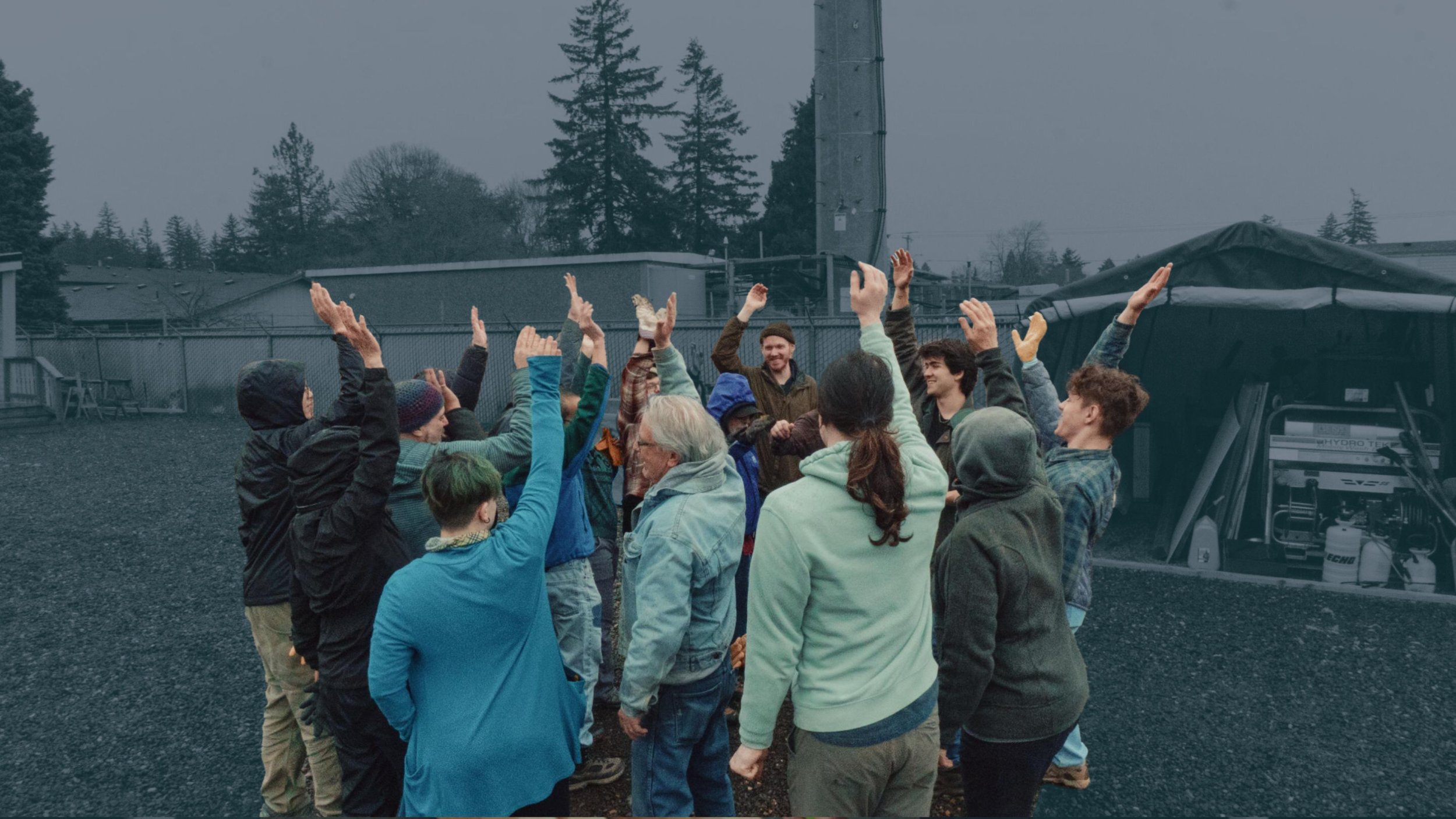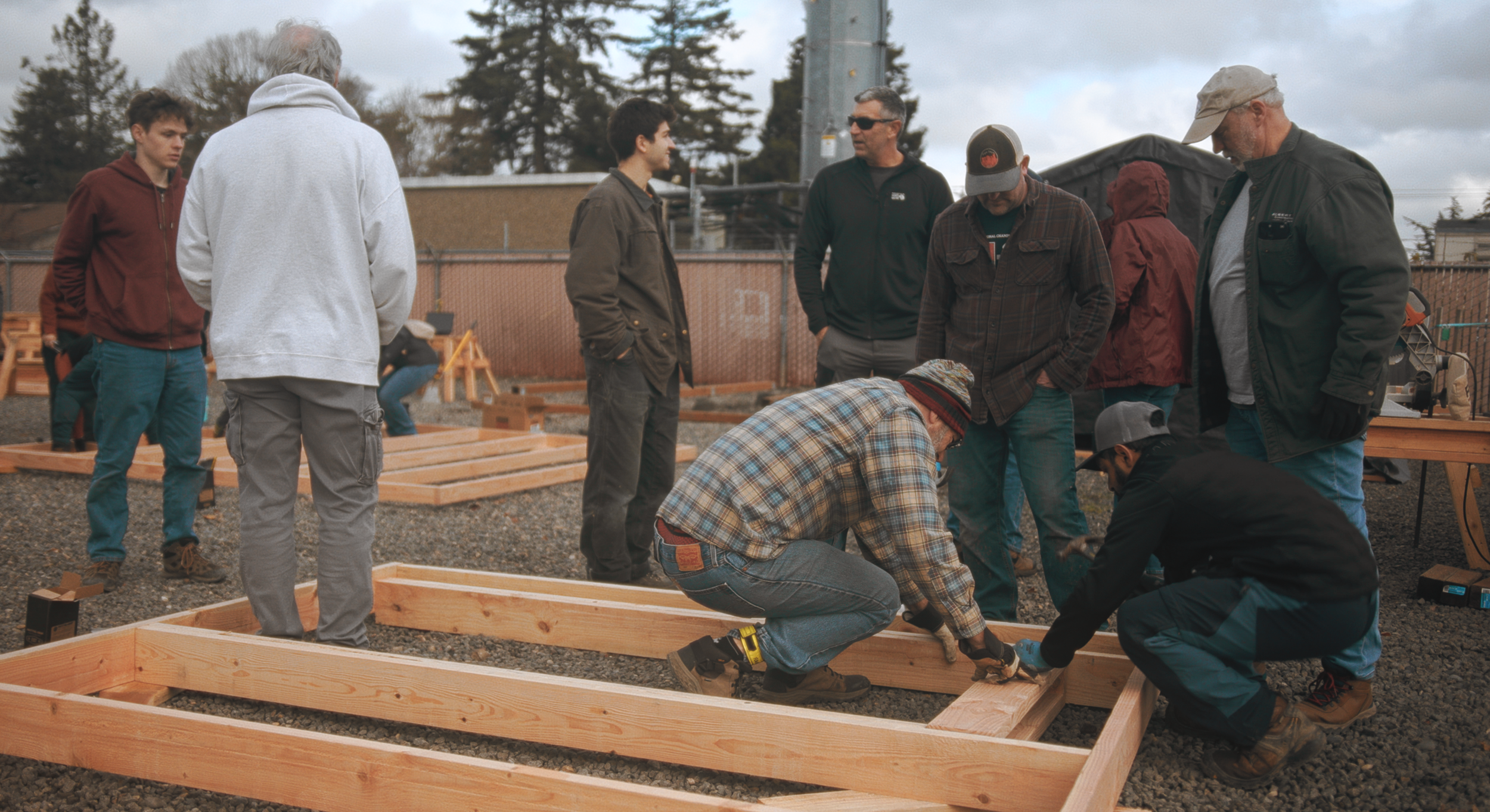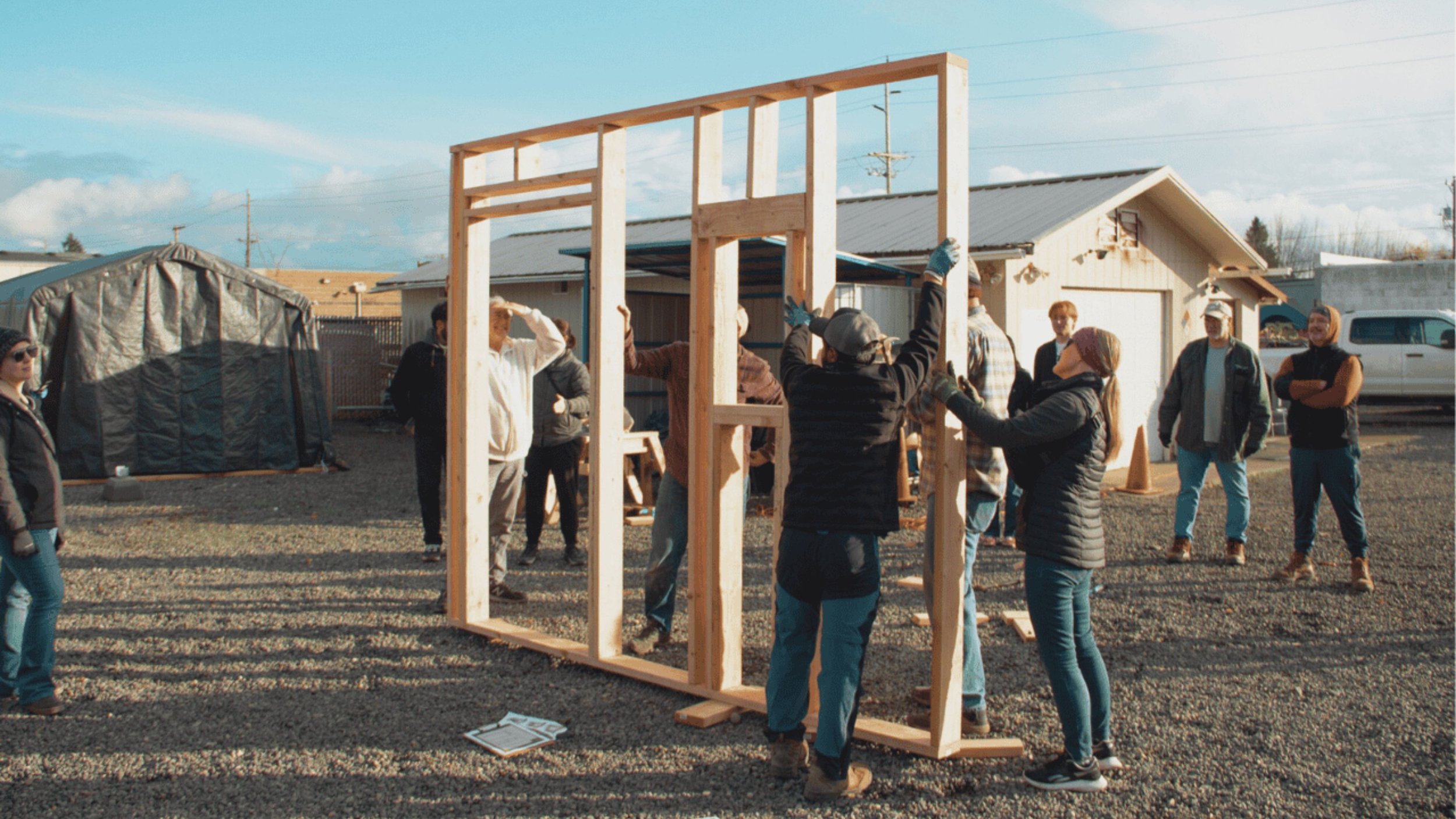
Let’s Support Our Unhoused Neighbors
Recycled Living is a volunteer-led organization transforming industrial plastic waste into recycled building materials. Our mission is to design better housing for transitional housing communities in Portland.
This innovative approach allows us to tackle both our core objectives—plastic recycling and supporting our unhoused neighbors—through a single united solution.

Listen to Our Radio Interview!
Watch Our Four Minute Video!
What’s unique about this home?
It’s more affordable. To recycle free plastic waste saves money in materials. The projected cost is around $5,000, which is one-third the price of the current model.
It’s more insulated. Six inches of insulation on the walls, nine inches on the roof, and properly sealed windows and doors will make this many times more insulated, saving the nonprofit’s cost to maintain.
It will recycle 1,550lbs of plastic otherwise headed to the landfill or shipped to other countries.
And it will look good! It will be a home someone wants to live in, that a nonprofit wants to work with, and that the community wants to see.
“We’re taking a step back to see what two extremely different issues; plastic pollution and houselessness, have in common. We’re asking if the consequence of an environmental issue could be utilized for issues more local.”
Charlie Abrams
Let’s go back three years. How did this organization begin and why are we doing this work?
Click Below To Read
-
Oregon has the highest rate of chronic homelessness in the country. For Portlanders, the reason was clear. From 2020 to 2022 we saw rent increase by 42%, our city was rated the 4th fastest gentrifying city in the nation, and low-income housing began to disappear. The rising population of our neighbors living unsheltered had a clear root; housing. Simultaneously, plastic manufacturing has created a crisis. As a country, we add a football stadium worth of plastic to the landfill every 15 hours. The role plastic has in the climate crisis is largely determined by how we manage it. The OECD (Organization for Economic Co-operation and Development) calculates that this year, waste plastic will release 200 million tons of carbon (more than three times Oregon’s annual carbon emissions) from its end of life. This shows us that how plastic is managed after its production matters. If we ship, landfill, mismanage, and incinerate plastics across the world, not only does this pose environmental challenges but these processes also generate and release carbon into the atmosphere.
-
Three years ago, we started to go to companies in Portland and inquire about where their garbage was going. We went to The Portland Traffic Supply Company, to the Vancouver Mall, to a grocery store, and to a plastic manufacturer. The Traffic company had boxes and boxes of big plastic spacers that held their sign poles in place. A clothing store in the Vancouver Mall received each garment wrapped in plastic bag after plastic bag. The grocery store started receiving plastic boxes of produce instead of cardboard boxes, and the plastic parts manufacturers generated huge amounts of ground plastics and parts that weren’t up to standard. Each company generates a different kind of plastic - what do they all have in common? None of them were recyclable.
Perfectly clean plastic isn’t recyclable.
We learned that even the companies want to recycle but they can’t. If recycling is limited to recreating consumer plastics the majority of plastic will be treated like trash. Only 8.5% of plastic is recycled and that has remained the same even as plastic production has doubled in the last two decades.
As Graham Forbes, a Plastics Leader at Greenpeace said:
“Not only are plastics killing marine animals, endangering our health, and creating a global pollution crisis, they are contributing to catastrophic climate change.”
There needs to be a new avenue that can recycle plastic into a new creation instead of a replication of the original virgin product.
-
When we study housing and houselessness across America we begin to see patterns. Cities with significant poverty rates, such as Detroit and Philadelphia, exhibit comparatively lower rates of houselessness nationwide, whereas wealthy cities like San Francisco and Seattle grapple with some of the highest rates of houselessness. Conversely, states that record the highest rates of drug overdose deaths like West Virginia, harbor relatively smaller homeless populations compared to other regions across the country. This aligns exactly with the statistics of our state.
Oregon is not one of the top states in terms of substance abuse. Oregon is also not in the top ten when it comes to individuals unable to receive Mental Health Care Services. And yet Oregon is at the very top when it comes to chronic homelessness and families living unsheltered. These statistics show us that across America, houselessness always comes back to the issue of housing itself. We’ve seen the widespread construction of apartment complexes, split-lot homes, and neighborhood gentrification; we've also seen a decline in low-income developments. Housing expenses are outpacing income growth. Within five years the average rent has increased 40%. Research indicates that a mere 10% uptick in rental costs correlates with a 13% surge in homelessness.
Recycling and Houslessness are two large issues.
We had to learn where and how we would be the most help.
Safe Rest Villages
Menlo Park Safe Rest Village
Transitional Housing Communities
This is a Safe Rest Village - a community of tiny homes that provide shelter for people living without it. These places are amazing. Residents have an address, they have somewhere safe to live, a case worker is assigned to help them receive the support they need, they have storage for their belongings, somewhere to wash themselves and their clothes, have warm food, and be a part of a community. The model is built to meet the needs of people who are unsheltered and supply resources to help reenter society. There are over a dozen of these housing communities around Portland with a few more underway as we speak.
When living unsheltered, mental health, addiction, and physical conditions are all expected to worsen. A housing-first solution, combats this, by providing someone with a home while they receive help.
The Safe Rest Village model became successful because free and affordable housing could be constructed by local nonprofits.
The model is working. However, we heard the same issue expressed by City Officials, SRVs, and Nonprofits: the homes used in many of these communities are creating issues. The Manager of a local Safe Rest Village told us about the homes they manage:
“They were not built very well - gaps in the windows, gaps in the corners. We had to fix the roof on every single one - it was a mess. The floors are terrible, they peel, they come up, it isn’t easy for us to clean at all”.
A single 192 sq ft unit of this model costs over $49,000. The smaller 8’x8’ models cost $17,000. Each one of these units experienced humidity and moisture problems of such severity that smoke detectors filled to the brim with water. One unit was even demolished after mold growth made it unlivable.
For many SRVs, the current bottleneck is in the structures themselves. If existing housing nonprofits and developments had access to an alternative material made from free recycled plastic, cost and labor would drastically be reduced while simultaneously creating a new avenue for recycling plastic waste. Safe Rest Villages would have a cheaper, more sustainable, and more efficient way to build homes. If we can create a better housing design we can radically support the nonprofits who run these Safe Rest Villages and the residents who live here.

Our mission within housing designs, is to push for homes to be more livable.
Housing is so much more than just shelter.
Portland needs a tiny home design that fits the needs of the resident, that is built to last, more accessible, and more cost-effective. By utilizing free recycled plastic, we can improve other aspects like square footage, storage, insulation, and amenities.
These aspects are vital to creating a place that supports each individual while raising the standard for future housing communities.

In November, we had our first volunteer build day!
We need solutions that build communities.
On November 23rd, over 40 volunteers came to support our neighbors as we began building our first home. The event was a collaboration between Recycled Living and Cultivate Initiatives to build a home for an unhoused neighbor sheathed with recycled plastic panels.
We worked together while learning about effective housing initiatives in a supportive community.










